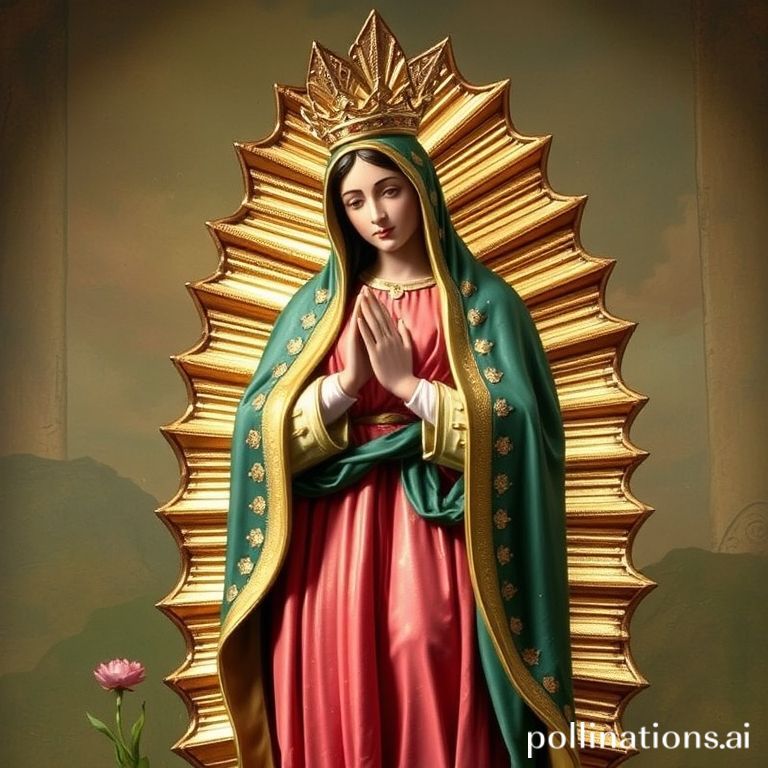Every year on December 12th, Mexico comes alive with vibrant celebrations honoring the Virgin of Guadalupe, the country’s patron saint. More than just a religious holiday, it’s a deeply ingrained cultural tradition that reflects the faith, identity, and spirit of the Mexican people. From elaborate pilgrimages to colorful processions and heartfelt prayers, the devotion to the Virgin is palpable throughout the nation. But why is this particular figure so revered, and what is the story behind this significant day?
Understanding the Day of the Virgin of Guadalupe requires delving into a rich history interwoven with faith, cultural syncretism, and national identity. It’s a story of miracles, hope, and the enduring power of belief, passed down through generations and manifested in a stunning display of devotion each December.
The Story Behind the Celebration
The story begins in December 1531, just a decade after the Spanish conquest of Mexico. According to Catholic tradition, the Virgin Mary appeared to an indigenous peasant named Juan Diego on Tepeyac Hill, near present-day Mexico City. Speaking to him in his native Nahuatl language, she asked him to request that the local bishop build a church in her honor on that very spot.
Juan Diego’s Encounters
- Juan Diego, a humble and devout man, approached Bishop Juan de Zumárraga with the Virgin’s request, but the bishop was skeptical and asked for proof.
- The Virgin then instructed Juan Diego to gather roses from the top of Tepeyac Hill, an unlikely request as it was winter and roses were not in season.
- Miraculously, he found the roses, gathered them in his tilma (a cloak made of cactus fiber), and presented them to the bishop.
- When Juan Diego opened his tilma, the roses fell to the floor, revealing an image of the Virgin Mary imprinted on the fabric. This miraculous image is what is now venerated in the Basilica of Guadalupe.
The Significance of the Virgin of Guadalupe
The image on the tilma resonated deeply with the indigenous population. The Virgin’s dark skin, her clothing adorned with indigenous symbols, and her use of the Nahuatl language, all suggested that she understood and embraced their culture, offering a message of hope and inclusion during a time of great upheaval and change. She became a symbol of unity and reconciliation between the indigenous and Spanish cultures.
A Symbol of Mexican Identity
Over the centuries, the Virgin of Guadalupe has become inextricably linked to Mexican identity. She is seen as a protector, a mother figure, and a symbol of hope and resilience. Her image is present everywhere, from churches and homes to businesses and even taxis. She represents the heart and soul of Mexico.
How Mexicans Celebrate the Day
The celebrations surrounding the Day of the Virgin of Guadalupe are among the most elaborate and moving in Mexico. Millions of pilgrims travel to the Basilica of Guadalupe in Mexico City, often walking or cycling for days, to pay their respects and offer prayers. The atmosphere is electric with devotion and faith.
Traditions and Festivities
- Pilgrimages: People from all walks of life travel to the Basilica, often carrying images of the Virgin or wearing traditional clothing.
- Masses and Services: The Basilica holds continuous masses and services throughout the day, with moving music, heartfelt prayers, and expressions of faith.
- Music and Dance: Traditional music and dance performances, particularly by indigenous groups, fill the streets around the Basilica. Mariachis serenade the Virgin with traditional songs.
- Food and Festivities: Food stalls and vendors line the streets, offering traditional Mexican dishes and treats. The atmosphere is festive and joyous.
- Home Altars: Many families create altars in their homes dedicated to the Virgin, adorned with flowers, candles, and images of the Virgin.
The Enduring Power of Faith
The Day of the Virgin of Guadalupe is more than just a religious holiday; it’s a testament to the enduring power of faith, cultural identity, and the human spirit. It’s a time for Mexicans to come together, to celebrate their shared heritage, and to reaffirm their devotion to the Virgin who has become such an integral part of their lives.
The Virgin of Guadalupe continues to inspire hope, offer comfort, and unite a nation. Her story is a powerful reminder of the importance of faith, compassion, and cultural understanding, and her image remains a beacon of hope for Mexicans both at home and abroad.
Conclusion
The annual celebration of the Virgin of Guadalupe on December 12th is a powerful and moving expression of Mexican faith and culture. Rooted in a miraculous story of appearance and imbued with centuries of tradition, the day serves as a reminder of unity, hope, and the enduring strength of belief. From the grand pilgrimages to the quiet prayers offered at home altars, the Virgin of Guadalupe remains a central figure in the hearts of Mexicans, embodying their identity and spirit.
If you found this article insightful, share it with your friends and family and let them know about this important celebration!
IMAGE: A wide shot of the Basilica of Guadalupe in Mexico City on December 12th. Millions of pilgrims are gathered in the plaza, many holding candles and images of the Virgin. The Basilica is brightly lit, and the atmosphere is filled with reverence and joy. Mariachi bands are playing in the background. The sky is a deep blue, and the overall mood is one of hope and faith. Style: Documentary photography with vibrant colors.


